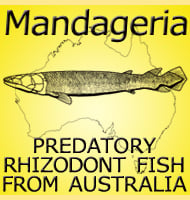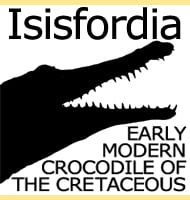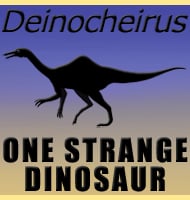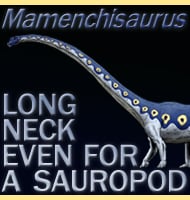In Depth
When it comes to the study of eurypterids, the type genus Eurypterus is the one you need to be most familiar with since the vast majority of known eurypterid fossils belong to this genus. It should be noted however that many of these fossils are of shed exoskeletons and that fossils of actual dead Eurypterus are rarer.
Eurypterus is often noted as having a short temporal distribution, yet the genus is known to have existed for most of the later stages of the Silurian period for up to some fourteen million years. The oldest fossils are attributed to European deposits while North American fossils are of individuals that lived later in the Silurian. This indicates that Eurypterus radiated out from their origin in Europe though they only seem to have reached North America from the close proximity of what would become North America to Europe at this time. So far there is no solid evidence to suggest that Eurypterus managed to colonise other parts of the world, though other genera of eurypterids are known.
Like with other members of the Eurypterida, Eurypterus was a primarily aquatic arthropod. Current thinking is that Eurypterus and other eurypterids were relatives of the arachnids and indeed the body parts of eurypterids can match up pretty well to the body parts of scorpions, even if the proportions are very different. However, Eurypterus and its relatives are usually treated as what is termed a sister group to the arachnids. This means that while they were very similar and shared ancestors common in form, they were still different enough to be considered a different evolutionary branch.
Like with its relatives the body of Eurypterus was elongated and clearly divided into two portions. The rear portion is the largest and can be broken down into two further sections, the mesosoma (segments 1 to 6) and metasoma (segments 7 to 12 and the telson). The smallest of these is called the prosoma and situated at the front, it incorporates both the head and thorax. These are actually made up of six segments, but they are covered by a single carapace that would have provided both extra support and protection for the prosoma. There were two crescent shaped compound eyes in the carapace, and a further two light sensitive eyes. On the underside of the prosoma was the mouth and six pairs of appendages. The first pair at the front of the mouth had pincers which were used for manipulating and breaking apart food so that it could fit into the mouth. The second, third and four pairs were short legs covered in spines which could have been used to both kill and hold onto prey as it was torn apart by the pincers. Moving towards the side, the fifth pair were the most adapted as legs, however there is some size variance of these legs between certain individuals. This could be a sign of sexual dimorphism, but opinions vary as to which sex the longer legs belong to. The sixth and final pair of appendages are much larger than the others and are shaped into a paddle-like form at the end. These seem to have been for the primary purpose of swimming through the water.
There are three forms of locomotion associated with Eurypterus and by extension other eurypterids. While foraging around on the sea floor, Eurypterus would have crawled along on their legs, which although small, would have probably been good enough to support the body weight when in the water. These legs however would not have been suitable for travelling over extended distances, especially since swimming would have been the superior method of locomotion in terms of speed and energy efficiency. There are two forms of swimming locomotion associated with Eurypterus, both are likely, though which one used may have depended upon the size of the individual. The rear appendages that have paddle-like ends are interpreted as the primary swimming devices, but these appendages can only really move forward and backwards, with little up and down motion taking place. How these paddles were used then would have actually been similar to how you angle your hands when swimming. On the down stroke you make sure that the palms of your hands ‘push’ against the water, the increase in surface area allowing for greater resistance against the water. On the upstroke however you don’t want this resistance otherwise you counter the push from the down stroke, so you angle your hands so that the smaller surface area of just the side moves through the water, cutting like a blade. Eurypterus likely angled the paddle on the end of the rear appendage so that the wider surface pushed against the water on the back stroke, while turning it so that only the lateral edge cut through the water on the forward stroke. In this manner forward motion could be easily maintained.
The above is a very plausible method for Eurypterus of all sizes, however it would not have been as energy efficient for larger bodied Eurypterus since their larger bodies would have caused greater resistance through the water because of their larger size. The increased weight and mass of the body would have also required greater effort to stroke through the water. It is believed that larger Eurypterus would have utilised what is technically known as subaqueous flight (also known as underwater flying). In essence this is where forward propulsion is actually achieved by undulating the main body, while the paddle-like rear appendages are used like hydrofoils. When the paddles are pitched so that the anterior (front) edge is high and the posterior (rear) edge is down, the paddle would create an upwards lift as it passed though the water, meaning that a Eurypterus would swim up. By contrast when the paddles were pitched so that the anterior edge was down and the posterior edge was up, a Eurypterus would swim down.
The above method is more energy efficient and would have allowed for a greater top swimming speed, but even large Eurypterus may have still used the paddle-stroking method occasionally as well. This could have especially been the case when an individual first set off since the paddle stroking method offered a greater rate of acceleration than the subaqueous flight method. Once a large Eurypterus had finally got going and cleared the sea floor it might have then switched to the subaqueous flight method, especially if it intended to swim for some way.
The paddle-like rear appendages may have also been used for steering since if the paddles could be independently controlled from one another then they could have been used to provide varying degrees of resistance and push. This is the same as if you were in a row boat or canoe, you turn yourself around by only paddling on one side.
Juvenile Eurypterus are similar to the adults in form but with a few differences. The carapaces were longer and parabolic in cross section, more of a smooth curve. The carapaces of adults by contrast were trapezoidal meaning that they were more box like. The eyes of juveniles were located in more lateral positions when young, eventually shifting towards a more forward position in later life, possibly signifying a shift to a more actively predatory lifestyle. The swimming legs are also noted as being thinner while the telsons are shorter.
The primary organs through which Eurypterus breathed are believed to have been the book gills that were located in between the segments of the mesosoma, the anterior section of the rear body that connects to the forward prosoma. As the name suggests they were made up of layers of folded tissues that looked like the pages of a book when it is left slightly open, and these organs are believed to have been the forerunners of the book lungs seen in later arthropods. However Eurypterus also had a second respiratory system represented by five pairs of ovals on the preabdomen which had small spines within them as well as a connection to blood vessels, similar to how blood vessels connect up with lungs. These two systems combined are popularly thought to not only allow for the processing of oxygen from sea water, but also to allow for respiration for short periods when actually on land.
Eurypterus are thought to have behaved in a similar manner to horseshoe crabs, spending most of the time living in the sea, yet returning to the shore to spawn. In addition to this a large number of fossils of moulted exoskeletons have been found in what were intertidal zones (the part of the coast that is exposed at low tide but submerged at high tide) back in the Silurian. Although primarily aquatic creatures, Eurypterus would have still been able to move about on land to a certain extent, the rear swimming appendages also probably being developed enough to push an individual across the sand. During these gatherings Eurypterus probably approached at high tide before spawning at low tide and then returning to the sea as the time came in again. This would have been the most energy efficient form of approach.
It is quite easy to appreciate however that as time went own, some arthropods that differed slightly with more developed limbs would have had an easier time moving around on the land. In time, over the course of millions of years, their descendants would have steadily evolved into the first terrestrial (fully land based) arthropods which in turn would develop into the land invertebrates that we know today. Fossil evidence suggests that Eurypterus spent most of the time living in shallow seas where they hunted for other marine organisms as well as scavenging the bodies of other creatures. When small, Eurypterus would have been restricted to hunting only small creatures, but larger Eurypterus may have also hunted other eurypterids, possibly even smaller relatives of their own genus. Eurypterus would have been most vulnerable during the time just after moulting and before their ‘new’ exoskeleton hardened. This might explain the huge abundance of moulted exoskeleton in intertidal zones. The only predators known at this time lived in the sea, in fact only rudimentary plants seem have been the only life forms living on the land. By staying out of the water as their exoskeleton hardened, as well as possibly shedding en masse, Eurypterus could reduce the danger to themselves since even if other eurypterid predators followed them onto shore, they would have been far more cumbersome than they would have been in the water.
Further Reading
- Two new Silurian species of Eurypterus (Chelicerata: Eurypterida) from Norway and Canada and the phylogeny of the genus, O. Erik Tetlie - 2006. – Eurypterids, arachnids, and the arthropod invasion of the land, John W. Merck 2011. – Specimens of Eurypterus (Chelicerata, Eurypterida) in the collections of Museo Geominero (Geological Survey of Spain), Madrid, O. E. Tetlie & I Rabano - 2007. - Autecology of Silurian Eurypterids, Paul A. Seldon - 1999. - The genera, species and subspecies of the family Eurypteridae, Burmeister, 1845, Erik N. Kjellesvig-Waering - 1958. - Eurypterid respiration, Paul A. Seldon - 1985. - The respiratory organs of Eurypterids, Philip J. Manning & Jason A. Dunlop - 1995. - Distribution and dispersal history of Eurypterida (Chelicerata), O. Erik Tetlie - 2007. - The biomechanics of swimming, John W. Merck - 2011.










